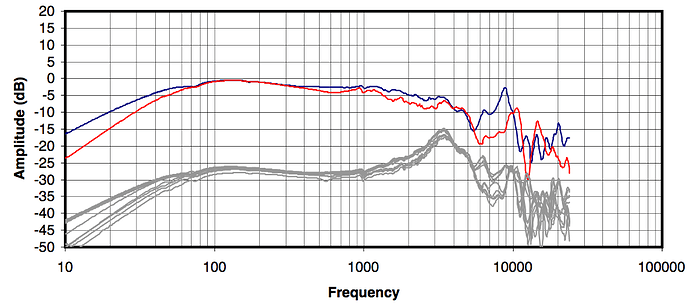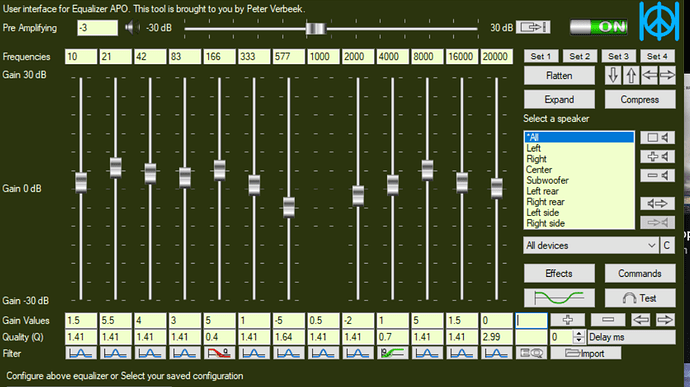I don’t know if this is the right place to post this but I’ve been playing around with my DT 1990’s to make them more mid forward. I don’t know too much about eq other than the bare basics so normally I go by ear.
I based my eq off Oratory 1990’s preset :
Band 1 LOW_SHELF FC 90 Hz GAIN 4,0 dB Q 0,7
Band 2 PEAK FC 220 Hz GAIN -3,4 dB Q 0,7
Band 3 PEAK FC 1500 Hz GAIN -1,0 dB Q 3,0
Band 4 PEAK FC 2700 Hz GAIN -1,1 dB Q 6,0
Band 5 PEAK FC 3700 Hz GAIN 2,6 dB Q 4,0
Band 6 PEAK FC 5500 Hz GAIN -1,5 dB Q 4,0
Band 7 PEAK FC 6400 Hz GAIN 2,9 dB Q 7,0
Band 8 PEAK FC 7350 Hz GAIN -5,8 dB Q 5,0
Band 9 PEAK FC 8350 Hz GAIN -7,3 dB Q 3,5
Band 10 PEAK FC 15000 Hz GAIN -6,0 dB Q 1,0
And this is my current “mid forward” preset:
Band 1 LOW_SHELF FC 90 Hz GAIN 3,0 dB Q 0,7
Band 2 PEAK FC 220 Hz GAIN 0 dB Q 0,7
Band 3 PEAK FC 1500 Hz GAIN 0 dB Q 3,0
Band 4 PEAK FC 2700 Hz GAIN 0 dB Q 6,0
Band 5 PEAK FC 3700 Hz GAIN 2,6 dB Q 4,0
Band 6 PEAK FC 5500 Hz GAIN -2 dB Q 4,0
Band 7 PEAK FC 6400 Hz GAIN 0,9 dB Q 7,0
Band 8 PEAK FC 7350 Hz GAIN -5,8 dB Q 5,0
Band 9 PEAK FC 8350 Hz GAIN -7,3 dB Q 3,5
Band 10 PEAK FC 15000 Hz GAIN -6,0 dB Q 1,0
Basically my changes were lowering the bass by 1 dB to hear vocals easier, undoing oratory’s changes to most mids frequencies as he reduced most of them (He did boosted 3700 so I left that one unchanged) and I reduced the 5500 and 6400 frequencies hoping to reduce siblance a little. As you can see most of my changes are based on nothing really so any thoughts about them would be appreciated.



